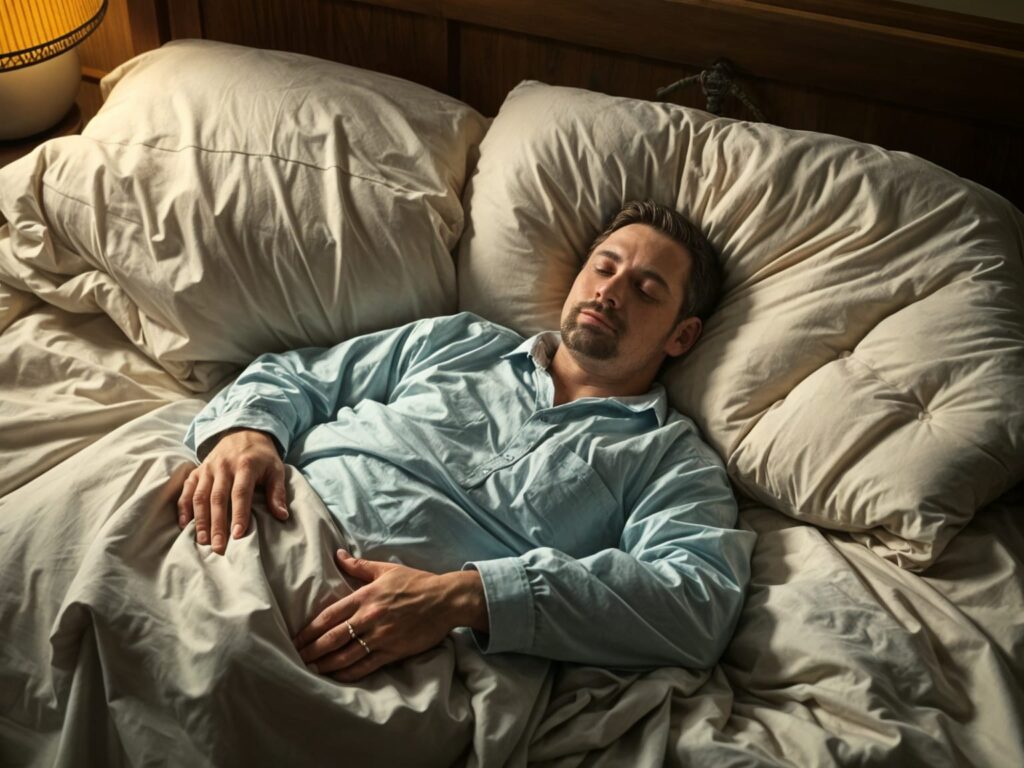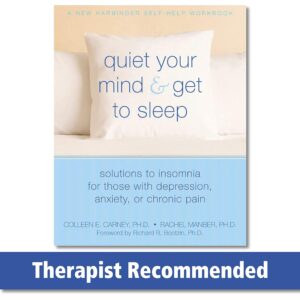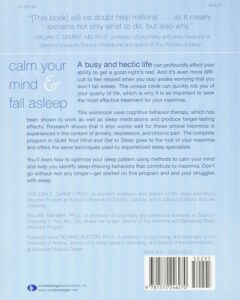In our fast-paced world, quality sleep has become something of a luxury. Yet it remains one of the most crucial pillars of good health, affecting everything from our immune function to our mental clarity and emotional resilience. If you’re among the millions struggling to get restorative sleep each night, this comprehensive guide will walk you through evidence-based strategies to transform your sleep experience.

Understanding the Sleep Cycle
Before diving into solutions, it’s worth understanding what happens when we sleep. Each night, our bodies cycle through four distinct stages:
- N1 (Light Sleep): The transition from wakefulness to sleep, lasting just 1-5 minutes.
- N2 (True Sleep): Body temperature drops and heart rate slows, typically lasting 10-25 minutes.
- N3 (Deep Sleep): The most restorative phase where tissue growth and repair occurs.
- REM Sleep: Where most dreaming happens, crucial for memory consolidation and learning.
A complete cycle takes about 90-110 minutes, and we typically need 4-6 cycles per night. Disruptions to these cycles can leave us feeling unrested, regardless of total hours spent in bed.
Creating the Perfect Sleep Environment
Temperature Matters More Than You Think
Research consistently shows that bedroom temperature significantly impacts sleep quality. The ideal sleeping temperature is between 60-67°F (15-19°C). Our body temperature naturally decreases during sleep, and a cooler room facilitates this process.
Pro tip: If you tend to run hot at night, consider moisture-wicking sheets and cooling mattress toppers designed with temperature regulation technology.
The Dark Side of Light
Even minimal light exposure can disrupt your circadian rhythm by suppressing melatonin production. Invest in blackout curtains to eliminate street lights, and remove or cover electronics that emit LED lights.
Advanced strategy: Use red-spectrum night lights if you need illumination for nighttime bathroom trips, as red light has minimal impact on melatonin production compared to blue or white light.
Sound Engineering for Sleep
While complete silence works for some, others benefit from consistent background noise that masks disruptive sounds. White noise machines, fans, or specialized sleep sound apps can create an acoustic environment conducive to uninterrupted sleep.
Personalized approach: Experiment with different sound frequencies—some people respond better to pink noise (like rainfall) or brown noise (like a rushing river) than standard white noise.
The Power of Routine
Consistency: Your Circadian Rhythm’s Best Friend
Your body thrives on predictability. Going to bed and waking up at the same times—even on weekends—helps regulate your internal clock and optimizes hormone production that controls sleepiness and alertness.
Implementation strategy: Don’t make drastic changes overnight. Adjust your schedule by 15-minute increments each day until you reach your desired sleep window.
Crafting a Wind-Down Ritual
The hour before bed should serve as a transitional period, gradually shifting your body and mind from active mode to rest mode. Effective pre-sleep rituals might include:
- A warm bath or shower (the subsequent cooling effect mimics the body’s natural pre-sleep temperature drop)
- Gentle stretching or restorative yoga poses such as Child’s Pose or Legs-Up-The-Wall
- Reading physical books (not e-readers) with calming content
- Journaling to transfer worries from mind to paper
- Preparing for tomorrow (setting out clothes, writing to-do lists) to reduce morning stress
Psychological insight: These rituals become powerful sleep cues over time. Your brain begins to associate these activities with impending sleep, triggering the appropriate hormonal responses.
Nutrition and Consumption Strategies
The Caffeine Timeline
Caffeine’s half-life—the time it takes for your body to eliminate half of it—is approximately 5-6 hours, but complete processing can take up to 10 hours. This means that afternoon coffee could still be in your system at bedtime.
Practical guideline: Establish a caffeine curfew. For most adults, avoiding caffeine after 2 PM allows sufficient clearance before bedtime.
The Alcohol Paradox
While alcohol might help you fall asleep faster, it severely compromises sleep quality by reducing REM sleep and causing fragmented sleep patterns in the second half of the night. Studies show even moderate evening consumption can reduce sleep quality by up to 24%.
Balanced approach: If you choose to drink, do so with dinner rather than as a nightcap, and keep it to one standard drink when possible.
Strategic Eating for Sleep Support
Certain foods can promote better sleep:
- Tryptophan-rich foods (turkey, eggs, cheese) provide the building blocks for melatonin
- Magnesium-rich foods (leafy greens, nuts) help muscles relax and may reduce stress
- Complex carbohydrates (whole grains, sweet potatoes) can increase serotonin production
Timing matters: A light carbohydrate-rich snack about 60-90 minutes before bed can actually support sleep onset, but heavy meals within three hours of bedtime typically disrupt sleep.
Physical Activity: Finding the Right Balance
Regular exercise is powerfully associated with improved sleep quality, but timing matters. Vigorous exercise raises core body temperature and stimulates the production of endorphins and adrenaline—great during the day, problematic close to bedtime.
Optimal approach: Aim for at least 30 minutes of moderate exercise daily, ideally completed at least 1-2 hours before bedtime. Morning exercise has the added benefit of exposure to natural light, which helps regulate your circadian rhythm.
Evening alternatives: If evening is your only exercise time, opt for gentle, restorative activities like walking, yin yoga, or tai chi in the hours closest to bedtime.
Technology and Sleep: Managing the Modern Challenge
The Blue Light Effect
The blue light emitted by screens inhibits melatonin production and increases alertness at precisely the wrong time. Research shows just two hours of evening screen time can suppress melatonin by about 22%.
Practical solutions:
- Use blue light blocking glasses in the evening
- Install apps like f.lux or enable Night Shift mode on devices
- Establish a “screen curfew” at least 60 minutes before bed
- If you must use devices, keep brightness at minimum levels
Digital Detox for Your Bedroom
Beyond light emission, the content we consume on devices can be mentally stimulating or emotionally activating—neither conducive to sleep. The mere presence of phones can create subtle anxiety about missed notifications.
Implementation strategy: Create a charging station outside the bedroom where all devices spend the night, and invest in a traditional alarm clock instead of using your phone.
Stress Management: Calming the Busy Mind
Mindfulness Practices
Research demonstrates that mindfulness meditation can significantly improve sleep quality by reducing the “fight or flight” response and lowering cortisol levels. Even brief practice can yield benefits.
Starting point: Try a simple body scan meditation. Lying in bed, bring awareness to each part of your body sequentially from toes to head, noticing sensations without judgment.
Cognitive Approaches to Night Worry
Racing thoughts are a common sleep disruptor. Cognitive techniques can help manage this:
The worry journal: Set aside 15 minutes in the early evening to write down concerns and possible solutions, then mentally “close the book” on them until tomorrow.
Thought stopping: When rumination begins, gently tell yourself “Not helpful right now,” and redirect attention to your breathing or a pleasant mental image.
Paradoxical intention: Instead of pressuring yourself to fall asleep (which increases performance anxiety), focus on simply resting comfortably and staying awake. This often relaxes the mind enough to allow natural sleep onset.
When to Seek Help: Recognizing Sleep Disorders
If consistent application of these strategies doesn’t improve your sleep over several weeks, it may indicate an underlying sleep disorder requiring professional attention:
- Insomnia: Persistent difficulty falling or staying asleep
- Sleep apnea: Breathing interruptions during sleep, often accompanied by snoring
- Restless legs syndrome: Uncomfortable sensations and urge to move legs when trying to sleep
- Circadian rhythm disorders: When your internal clock is significantly misaligned with conventional sleep times
Warning signs: Chronic daytime fatigue despite adequate time in bed, loud snoring with gasping or choking sounds, or falling asleep unintentionally during daytime activities warrant medical evaluation.
Advanced Sleep Optimization Techniques
Temperature Regulation Beyond Room Setting
Your body’s temperature fluctuations are integral to quality sleep. Beyond setting the thermostat:
- Contrast showering: Ending your shower with 30 seconds of cooler water can trigger a sleep-promoting drop in core temperature
- Cooling bedding technologies: Phase-change materials in modern mattress toppers can absorb body heat during temperature spikes
- Warming extremities: Slightly warm hands and feet (with socks or a brief heating pad application) can paradoxically help lower core temperature by redistributing blood flow
Chronotherapy: Working With Your Chronotype
We all have genetic predispositions toward being morning people (“larks”) or evening people (“owls”). Rather than fighting your chronotype, work with it when possible:
- Early chronotypes: Leverage your natural early energy for important tasks, accept earlier bedtimes
- Late chronotypes: If possible, negotiate work schedules that accommodate your biological preferences
- Neither extreme: You likely have flexibility to gradually shift your schedule as needed
Conclusion
Quality sleep isn’t a luxury or an indulgence—it’s a fundamental biological necessity and perhaps the single most important health investment you can make. The benefits extend far beyond simply feeling refreshed; optimal sleep improves immune function, enhances cognitive performance, regulates appetite hormones, supports emotional regulation, and even influences longevity.
By implementing these strategies consistently and patiently, you’re not just improving your nights but transforming your days. Remember that sustainable sleep improvement typically comes gradually—celebrate small victories and trust in the cumulative power of good sleep habits.
Hey there! We hope you love our fitness programs and the products we recommend. Just so you know, Symku Blog is reader-supported. When you buy through links on our site, we may earn an affiliate commission at no extra cost to you. It helps us keep the lights on. Thanks.
Disclaimer: The information provided in this discussion is for general informational and educational purposes only. It is not intended as medical or professional advice. Only a qualified health professional can determine what practices are suitable for your individual needs and abilities.


